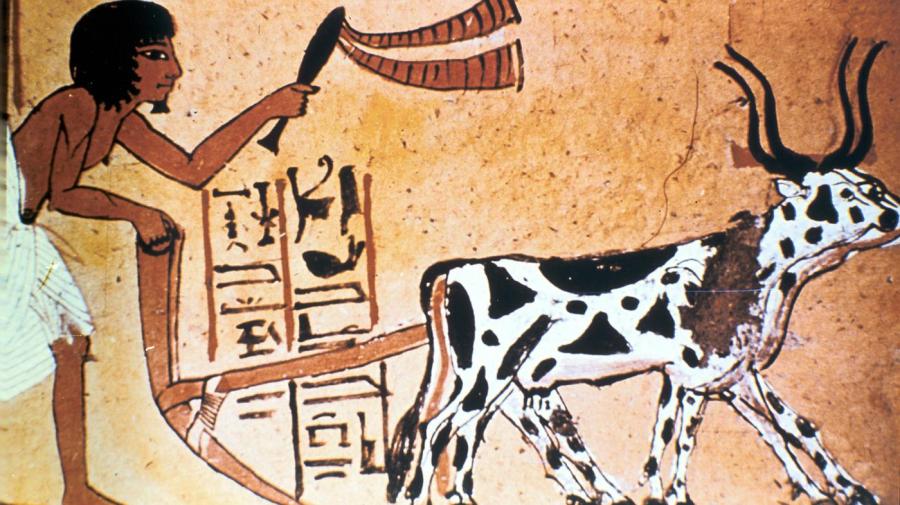What Crops Did the Ancient Egyptians Grow?

Ancient Egyptians grew a wide variety of grains, vegetables and fruits. The yearly flooding of the Nile River provided plenty of fertile ground for growing wheat, barley and flax as the main crops. Onions, leeks, dates and figs are some examples of vegetables and fruits grown.
The regular flooding deposited nutrient-rich sediment along the river banks, which made perfect soil for agriculture. Agriculture was a large part of Egyptian daily life, and Egyptians grew many different types of crops for food and exporting.
One important crop that grew naturally on the edges of the river, but was also cultivated, was papyrus reeds. These reeds were essential for life along the Nile. The ancient Egyptians turned these reeds into skiffs for travel along the river, sandals, mats, paper and baskets. It was a cheap, versatile crop that was integrated into fashion and industry.
The fertile Nile banks were also great for keeping animals. The soil easily grew the food that farm animals, such as cows, sheep and pigs, needed to eat. This allowed the ancient Egyptians to have full farms that produced not only crops, but meat, hides and dairy items. The dung of animals was used for fires, and the larger animals, such as oxen, helped improve agricultural production.





